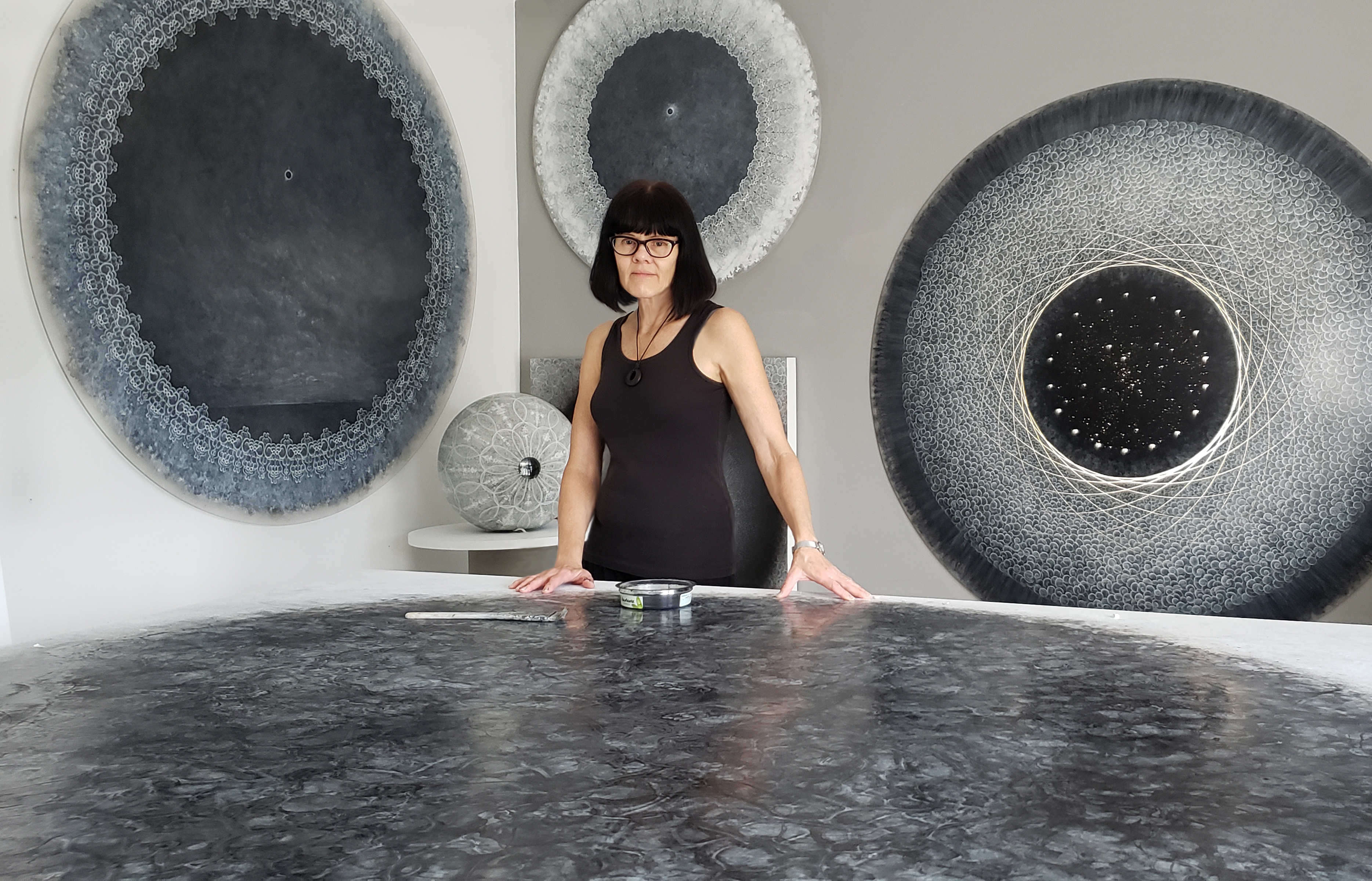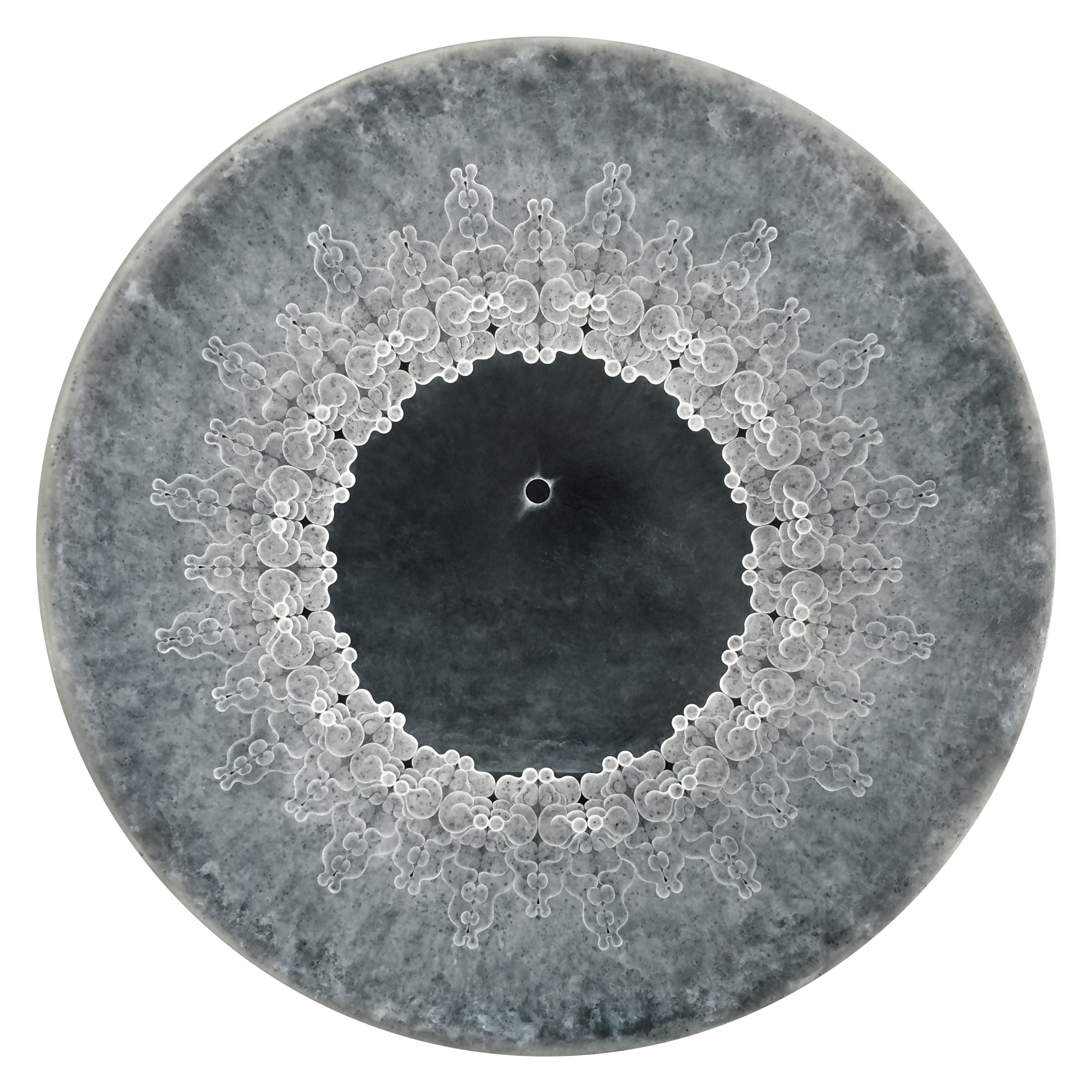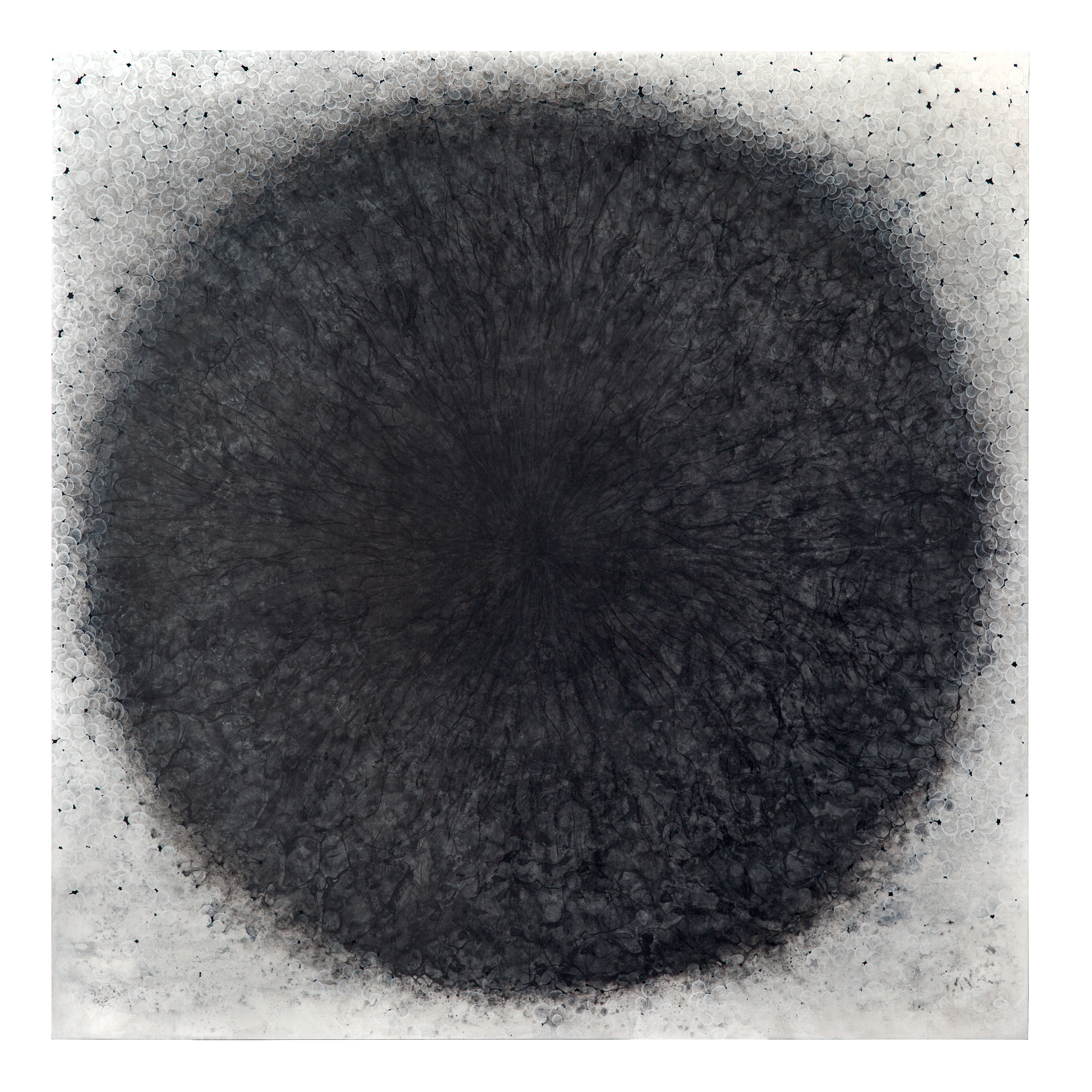Working in Silver, Artist Conveys Mystery of Solar Eclipses in New Show

The drama of a total solar eclipse has astonished countless astronomers and amateurs, but few have channeled that astonishment as beautifully as artist Carol Prusa.
Prusa works in silverpoint, a technique that mimics pencil drawing but with silver replacing the graphite. She learned the technique in Italy studying the work of Italian Renaissance artists like Leonardo da Vinci and Michelangelo. "It also lends itself to certain alchemical beauty because it tarnishes, so you can get warms and cools, browns and blues out of it," Prusa said of the technique. "It's very subtle, but I live in a pretty subtle world."
That subtlety is on full display in the artwork in Prusa's new exhibition, "Carol Prusa: Dark Light," on view at the Boca Raton Museum of Art in Florida until Jan. 19, 2020.
Related: JunoCam Images: Where Science Meets Art and NASA Meets the Public
The nearly two dozen pieces resulted from Prusa's own eclipse-viewing experiences, as well as wide-ranging reading on astronomy. She was particularly fascinated by the work of key female astronomers like Vera Rubin, who discovered dark matter; Maria Mitchell, who discovered a comet in 1847; Henrietta Swan Leavitt, who discovered how to measure the distance to stars; and Leavitt's colleagues at the Harvard College Observatory.
We talked to Prusa about turning cosmic wonder into art. This interview has been edited for length and clarity.
Space.com: What's your earliest memory of being interested in astronomy?
Breaking space news, the latest updates on rocket launches, skywatching events and more!
Carol Prusa: I grew up in Chicago, so the night skies were not that great. In sixth grade, I learned about the Big Bang theory, and being raised in a very strict Christian church, this sort of blew my mind. So I really gave a lot of thought to it and tried to understand it. I had this experience of looking out my bedroom window, over my neighbor's roof, thinking about how vast the universe was, and then trying to erase everything so I could get to where there was nothing, before there was something, which was the Big Bang. And it kind of blew my mind. That's when I started to read anything I could to try to understand why the world was the way it was.
Space.com: How did art and science come together for you?
Prusa: I thought I was going to pursue science, so I went away to college [as] a chemistry major. I met an artist and I realized that there was this whole other way of thinking about how to answer the same questions that I hadn't experienced before. I took beginning drawing, and I realized that the questions I had as a scientist were the same as the questions an artist has about the world around them.
The intersection of the known and unknown is where both artists and scientists work, and art can reach out to express that vastness and overwhelming sense of life around you. Scientists approach it differently, but not all that differently, which is sort of shocking. I knew I had to come to terms with artists and try to understand why they went about it the way they did.
Once I stepped into beginning drawing class, my mind went on fire. I was engaged in a way that I had never been engaged before. I think when I was titrating unknowns and observing that, that was really compelling to me. But then drawing, particularly from observation, it required so much of my neurons firing — it's the most alive I ever felt. … I like the freedom of art, because I didn't truly have to answer anything. Art only has to answer to itself, so it can have its own internal logic that doesn't work in any other system. There's a certain beauty to that for me.
Space.com: How did you know you wanted to make art about eclipses?
Prusa: In her journals, [Mitchell] talks about going to see the solar eclipse in Denver, and I knew a solar eclipse was coming up and I was like, "Well, I need to go and experience this too, so I'll follow in her footsteps." I went out to Nebraska and stood on the bank of the North Platte River and observed the solar eclipse.
It was an experience that was so otherworldly, even though I had seen pictures of eclipses, that I lost my grounding and I literally felt backwards. And the change in the light, and I think it was when Venus popped out in the sky to my right, but the sky to my left was still day. And then the moon became like this sharp, black disk. And then the clovery corona, it was like a palladium color. I couldn't grasp it — it was too much. It took my breath.
After that experience, I realized in order to come to terms with it, I was going to have to create art and just really embody what that felt like through the art. … It's been quite a journey, two years of work to finally feel like I have a sense of what it was I experienced in that light.
Space.com: What was your process for imagining and creating these pieces?
Prusa: To begin with, what I did was I worked to depict my memory of the eclipses as completely as I possibly could. That would occur in the center of the piece, surrounded by a portal arrangement of forms that represented my location or my body or my sensory perception. So, the center of the portal would be this unknown, or this thing I had to come to terms with.
Once I had worked those images out to where I could get the tones and the color the way I felt about it, then I decided the quality of light was critical and I started researching scotopic vision, or night vision, and that kind of shimmer that occurs and how you think you see things when you don't. Then, I worked more abstractly. I made a series of paintings just describing the quality of light and shimmer and how depth perception shifts during an eclipse or from day to night. That led me to thinking about structure and darkness and what can you see in darkness.
Space.com: What do you hope visitors to the exhibition take away from your work?
Prusa: What I hope is that they'll pause enough to sense a connection with it, that everything's interconnected, and that they'll see into the darkness and see the structure or vastness of the cosmos. I know this sounds really corny, but I think that it's so beautiful to be alive and to have an appreciation for that, and I hope my work expresses that.
And I do hope that they will look into these amazing women I named in my work. I hope that they'll go away and think, "I didn't know these women. I should look up and read about them." … These women scientists were just astonishing. I never depict the research. I read the research, but I'm not good enough to depict it. I don't understand it well enough. But I try to honor them with a feeling-tone of what it was that they accomplished and the way it runs through me.
Space.com: Any final thoughts?
Prusa: Artists and scientists both share a concern for the edge between what's known and not known. And scientists give different form to it, but we both work with something that's formless. I love how scientists will model it in math, and math is so perfectly beautiful and has this great symmetry to it. But, you know, artists do the same thing. I think we're so similar.
- Here's What Some Artists Think of the #dearMoon Art Project
- Behold! This Stunning Light Art Is Actually a Sky Filled with X-Rays
- This Video of a 1900 Total Solar Eclipse Is the Oldest One Ever (and Made by a Magician!)
Email Meghan Bartels at mbartels@space.com or follow her @meghanbartels. Follow us on Twitter @Spacedotcom and on Facebook.

Meghan is a senior writer at Space.com and has more than five years' experience as a science journalist based in New York City. She joined Space.com in July 2018, with previous writing published in outlets including Newsweek and Audubon. Meghan earned an MA in science journalism from New York University and a BA in classics from Georgetown University, and in her free time she enjoys reading and visiting museums. Follow her on Twitter at @meghanbartels.





